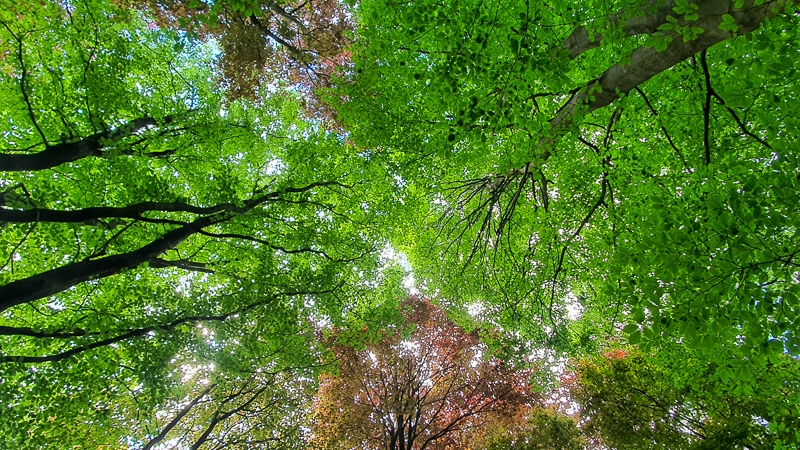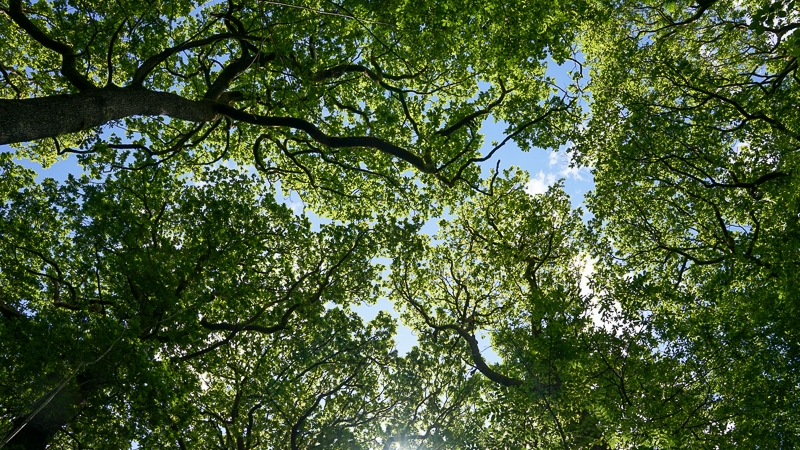A BRIEF HISTORY OF BRITISH WOODLAND

Look, I hate to break it to the plant a tree people, but we probably never had closed canopy tree cover in Britain. We did have a lot more trees, though. Once upon a time.
There's a lot of debate between conservationists as to which era we should model our efforts on. Should we be trying to make our landscape look like it did 300 years ago? 3,000? 11,000? Some people think we shouldn't model back in time like this at all. Let's take a look at what it might've looked like.
11,500 BC. Grass central: beginning of post-glacial Britain
Tundra and moorland as far as the eye can see. Grasses abound, heather paints the landscape pink and purple.
10,000 BC. The arrival of the trees
Birch, aspen and sallow (my favourite: willow) colonise from the south. These pioneering folks are the first trees to grace Britain after glaciation. They're all quite soft, golden leaves fluttering in the breeze.
8500 BC. Cones and nuts
Pine and hazel are here to join the party. Birch seems to take offence and leaves (they mostly replace birch).
8000 BC. Acorns and acorn-like fruits
Oak and alder arrive on the scene. Later, lime and elm rock up. Nice of you to show, guys.
7300-4500 BC. The start of the Atlantic Period
Everyone's chilling. A long period of stability with the cast of characters we already introduced just doing their thing.
4500 BC. The climax
At some point around 4500 BC, holly, ash, beech, hornbeam and maple arrive with an apologetic bottle of wine. It's all downhill from here for the wildwood.
4200 BC. The elm decline
And so it begins. From about 4200 BC the first to fall is elm. Half the elm disappear from Europe, probably due to Dutch Elm Disease, possibly spread by neolithic humans. Also, humans start destroying the wildwood for cultivation and sustain this habit of destruction through the Neolithic period.
2000-700 BC. Turning the hills brown
The Bronze Age. Human clearance of wildwood continues into high altitudes. When farming can't be maintained (duh), the higher plains turn to moorland.
500 BC. Half gone
Half the wildwood has been cleared for farming. Most of the trees cut down are wasted. The wood we use comes from managed woodland (not plantation), and the most important wood is underwood, not timber.
AD 43. Romans pick up the farming baton
The Romans invade England and find a land already extensively farmed. Farming has reached poor soils and the Fens. Land is already privately owned. Hedges are a thing.
AD 450. The post-Roman recession
Five million (ish) people suddenly become one and a half million. We don't really know why, maybe plague. The Anglo Saxons (a smaller population) ease up on industrial use, but still intensively manage the remaining woodland. Woods are valuable private property.
1086. Doom and gloom in the Domesday Book
Five-sixths of the wildwood has gone. Estimates indicate that about 15% of the 27 million acres of land recorded in the Domesday Book were wooded. We are already well below the levels of woodland of other European countries (modern day France is still 20% woodland and, spoiler alert, there's more destruction of British woodland to come).
1086-1251. Pressure on the land
The population doubles and the area we farm increases substantially. Woodland is pretty stable. The Fens are drained, the Weald made into farmland. We re-advance into the moorland (despite how badly it went last time).
1200-1400. Brief relative harmony
In the Middle Ages, coppiced woodland produces wood and timber and there's lots of international trade in both. There is little change and little waste. Both wood and timber are gained from regrowth of stumps. Underwood is important: species like ash, hazel, maple, thorn, sallow, elm, lime, birch, crab and oak.
1500-1600. Black Death recovery
The population recovering after the black death gets to work grubbing out woodland for more farmland. Counterintuitively, industry protects trees. Lots of industrial uses, like ironworks, require wood and regenerative practices mean that industry protects living woodland. The driver of destruction? Farming.
1611. Tentative forestry
Forestry begins, but within species-mixed coppiced woodland.
1700s. Tree destruction takes hold
Lots of woods are grubbed out, uprooted from the ground.
Late 1800s-1945. The rise of forestry
Cheap metal and steel flood the country, and coppicing and regenerative woodland management fall into decline. By 1905, only a third of woodland/plantation is still coppice. Ancient woodland and moorland are seen as fair game for conifer plantations. Government policy encourages monoculture planting. Reasonable stability overall, though.
1945-1975. Unprecedented destruction
Nearly half our remaining ancient woodland is destroyed. In only 28 years, as much ancient woodland is destroyed as in the previous 400. Main causes: forestry plantations and farming. About a third of our ancient woodland is replanted, mainly with conifers. Government policy is that we need every acre to grow food, although improvements in farming mean this isn't really true.

Check out Oliver Rackham's The History of the Countryside for a more detailed history of our woodland.
Share with your friends
Subscribe to learn more
Join me in exploring our natural world and cultural heritage as we learn how to protect and restore it. Get notified on my latest posts and a monthly newsletter on wider conversation topics for us to chat about.
Recent Posts
If you enjoyed this one, then you might like these too.